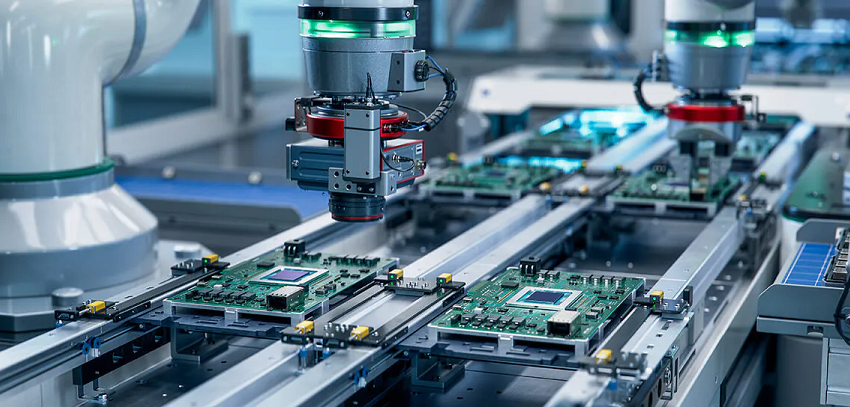Design for Manufacturing (DFM) Best Practices in Electronics Manufacturing
In the rapidly evolving world of electronics manufacturing, companies are constantly seeking ways to enhance efficiency, reduce costs, and ensure the highest quality of products. One of the most effective strategies for achieving these goals is the implementation of Design for Manufacturing (DFM) principles. DFM is a set of best practices aimed at designing products in a way that simplifies the manufacturing process, minimizes waste, and maximizes product quality.
By integrating DFM principles early in the design phase, manufacturers can anticipate potential production challenges and make informed decisions that result in smoother, more cost-effective production. This article takes a deep dive into DFM, outlining its core principles, how it helps reduce costs and streamline production, and its overall impact on the quality of electronics.
What is Design for Manufacturing (DFM)?
Design for Manufacturing (DFM) is an approach to product design that takes into account the ease and cost of manufacturing throughout the development process. Instead of considering design and manufacturing as separate phases, DFM integrates both to ensure that products are not only functionally sound but also easy to produce.
DFM focuses on optimizing design elements like component selection, layout, and material choice to ensure that the manufacturing process is efficient and cost-effective. By incorporating DFM principles, manufacturers can reduce production errors, shorten time-to-market, and minimize overall costs.
Key Principles of DFM in Electronics Manufacturing
When it comes to electronics manufacturing, the DFM process can be particularly impactful. Electronics are made up of intricate circuits, components, and assembly methods that require precise handling. Here are some of the key DFM principles applied in electronics manufacturing:
1. Component Standardization
One of the foundational principles of DFM is to standardize components whenever possible. By selecting widely available, standardized components, manufacturers can reduce sourcing costs and ensure more reliable supply chains. Standardized components are also more likely to be compatible with automated assembly processes, which reduces production complexity and the likelihood of errors.
Moreover, standardization simplifies inventory management. Instead of managing dozens of different parts for each product, manufacturers can streamline the number of unique parts they need to stock, reducing both procurement and storage costs.
2. Minimizing Component Count
Another critical DFM principle is to reduce the total number of components in a design. The more parts a product contains, the more complex and time-consuming its assembly becomes. This not only increases labor costs but also raises the potential for errors during assembly.
In electronics manufacturing, minimizing the component count often involves integrating multiple functions into a single component or module. For example, designing a custom integrated circuit (IC) to handle multiple functions instead of using separate components can simplify the circuit board layout and reduce assembly time.
3. Designing for Automated Assembly
With advancements in automation technology, much of the electronics manufacturing process is now automated. However, not all designs are optimized for automated assembly. DFM principles encourage designing products in ways that are compatible with the automated equipment used in manufacturing.
This can include considerations such as spacing between components, orientation of parts, and ensuring that components are easily accessible for automated soldering and testing. By designing with automation in mind, manufacturers can significantly reduce production time and labor costs while increasing output consistency.
4. Simplified PCB Layouts
Printed Circuit Boards (PCBs) are the foundation of almost every electronic device, and designing them efficiently is critical to DFM. Simplifying PCB layouts by minimizing trace complexity and avoiding unnecessary layers can reduce manufacturing costs and time. Additionally, simplifying the design makes it easier to detect and resolve issues during the testing phase.
One way to optimize PCB design is to follow clear and consistent design rules, such as maintaining adequate spacing between components and minimizing via (vertical interconnect access) usage. This reduces the risk of manufacturing defects, such as short circuits or solder bridging, and helps to ensure that the PCB performs reliably.
5. Material Selection and Availability
Choosing the right materials for electronic components is another key aspect of DFM. Selecting materials that are not only high quality but also readily available can have a significant impact on production timelines and costs. Materials that are difficult to source can lead to delays, especially if they are subject to supply chain disruptions or long lead times.
In addition to availability, DFM encourages the selection of materials that are easy to work with during manufacturing, such as materials that respond well to soldering, bonding, or cutting processes. The goal is to balance material performance with ease of manufacturing to ensure both durability and manufacturability.
How DFM Reduces Costs and Streamlines Production
Implementing DFM principles offers several advantages that can directly reduce costs and streamline the production process. Here’s how DFM achieves this:
1. Reducing Production Time
By simplifying designs, reducing component counts, and ensuring compatibility with automated systems, DFM minimizes the time it takes to assemble electronic products. Fewer components and streamlined layouts mean less time spent on soldering, assembly, and testing. Automated processes can also be run more efficiently with designs tailored to the capabilities of the equipment, speeding up production and increasing throughput.
2. Lowering Labor Costs
DFM aims to minimize manual intervention in the manufacturing process. By designing products that are easier to assemble and test automatically, manufacturers can reduce reliance on skilled labor, which tends to be more expensive. Even in cases where manual assembly is required, DFM can reduce the complexity of the assembly process, leading to faster assembly times and lower labor costs.
3. Minimizing Waste and Rework
Poorly designed products often require extensive rework, which increases costs and lengthens production cycles. DFM helps to reduce these risks by identifying potential design flaws early and addressing them before the manufacturing process begins. This reduces the chances of defects and ensures a higher yield of fully functional products, minimizing waste.
DFM’s Impact on Product Quality
DFM doesn’t just reduce costs and improve production efficiency—it also enhances the quality of the final product. By adhering to DFM principles, manufacturers can design products that are more reliable, easier to test, and less prone to defects. For example, standardized components are less likely to fail due to variability in quality, while simplified PCB layouts reduce the risk of shorts and other electrical issues.
Moreover, the testing and inspection processes can be more effectively integrated into a DFM-focused design. Products designed for ease of testing allow for quicker identification of issues during the production phase, enabling manufacturers to catch and correct problems before products reach the end-user.
Conclusion
Design for Manufacturing (DFM) is a critical strategy in electronics manufacturing that helps to reduce costs, streamline production, and improve product quality. By adhering to DFM principles—such as standardizing components, minimizing component counts, and optimizing designs for automated assembly—manufacturers can reduce the complexity of the manufacturing process while maintaining the reliability and performance of their products. In a competitive marketplace where time-to-market and cost efficiency are paramount, DFM serves as a powerful tool for achieving manufacturing excellence.


